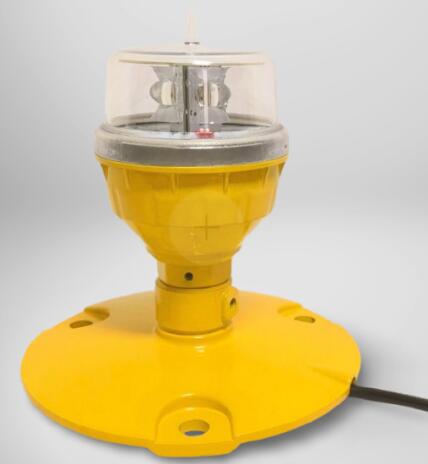Enhancing Safety with Advanced Helipad Perimeter Lighting Solutions
Helipads are critical infrastructures used in medical emergencies, military operations, offshore platforms, and urban high-rise buildings. Ensuring safe landings and takeoffs, especially in low-visibility conditions, requires reliable helipad perimeter lighting. These lighting systems define the landing zone, prevent accidents, and comply with aviation safety regulations. This article explores the importance, types, and technological advancements in helipad perimeter lighting, highlighting their role in modern aviation safety.
The Role of Helipad Perimeter Lighting
Helipad perimeter lighting serves multiple purposes:
Boundary Definition – Clearly marks the edges of the helipad to guide pilots during approach and landing.
Obstruction Avoidance – Helps pilots identify potential hazards near the landing zone.
Visibility in Adverse Conditions – Ensures functionality during nighttime, fog, rain, or snow.
Regulatory Compliance – Meets standards set by aviation authorities like FAA, ICAO, and EASA.
Without proper perimeter lighting, the risk of misalignment, hard landings, or collisions increases significantly.
Types of Helipad Perimeter Lighting
1. LED-Based Perimeter Lights
Modern helipad perimeter lighting predominantly uses LED technology due to its energy efficiency, long lifespan, and high brightness. LEDs provide clear visibility while consuming minimal power, making them ideal for solar-powered or remote helipads.

2. Solar-Powered Lighting Systems
For off-grid or remote helipads, solar-powered perimeter lights offer a sustainable solution. These systems include photovoltaic panels, rechargeable batteries, and automatic dusk-to-dawn sensors, ensuring continuous operation without external power sources.
3. Elevated vs. Flush-Mounted Lights
Elevated Lights – Installed on short poles around the helipad, providing better visibility from the air.
| helipad perimeter lighting |
Flush-Mounted Lights – Embedded into the helipad surface, reducing trip hazards and maintaining a low profile.
4. Dual-Intensity Lighting
Some helipad perimeter lighting systems feature adjustable brightness levels—high intensity for poor weather and low intensity for clear conditions—enhancing energy efficiency.
Key Features of Modern Helipad Perimeter Lighting
1. High Durability & Weather Resistance
Helipad lights must withstand extreme temperatures, heavy rain, UV exposure, and mechanical stress. High-grade materials like polycarbonate and corrosion-resistant aluminum ensure longevity.
2. FAA & ICAO Compliance
Regulatory bodies mandate specific colors (typically white or yellow), light intensity, and flash patterns. Compliant helipad perimeter lighting ensures legal operation and safety certification.
| helipad perimeter lighting system |
3. Wireless Control & Smart Monitoring
Advanced systems integrate remote diagnostics, allowing operators to monitor light status, battery levels, and potential malfunctions in real time.
4. Quick Installation & Low Maintenance
Modular designs and wireless configurations simplify installation, while LED technology reduces maintenance needs compared to traditional incandescent systems.
Applications of Helipad Perimeter Lighting
1. Hospital & Emergency Medical Services (EMS) Helipads
Timely medical evacuations depend on clearly visible landing zones. Reliable helipad perimeter lighting ensures safe operations during critical nighttime rescues.
2. Offshore & Marine Helidecks
Oil rigs, ships, and marine platforms require rugged, corrosion-resistant lighting that functions in saltwater environments.
3. Military & Defense Operations
Military helipads often operate in remote or hostile environments, necessitating robust, low-maintenance lighting solutions.
4. Urban Rooftop Helipads
High-rise buildings in cities use perimeter lighting to facilitate corporate, emergency, and VIP helicopter landings while minimizing light pollution.
Advancements in Helipad Lighting Technology
1. Adaptive Lighting Systems
Newer models adjust brightness based on ambient light or weather conditions, improving energy efficiency.
2. Integrated Navigation Aids
Some helipad perimeter lighting systems synchronize with approach path indicators (APIs) for enhanced pilot guidance.
3. Eco-Friendly Designs
Solar-powered and low-energy LED systems reduce carbon footprints, aligning with global sustainability goals.
Helipad perimeter lighting is a vital component of aviation safety, ensuring precise landings and takeoffs in all conditions. With advancements in LED efficiency, solar power, and smart monitoring, modern systems offer unparalleled reliability and compliance. Whether for hospitals, offshore platforms, or urban rooftops, investing in high-quality helipad perimeter lighting enhances operational safety while meeting stringent aviation standards.
As technology evolves, future innovations may include AI-powered adaptive lighting and enhanced wireless controls, further revolutionizing helipad safety systems. For now, choosing the right helipad perimeter lighting remains a critical decision for any facility relying on helicopter operations.
